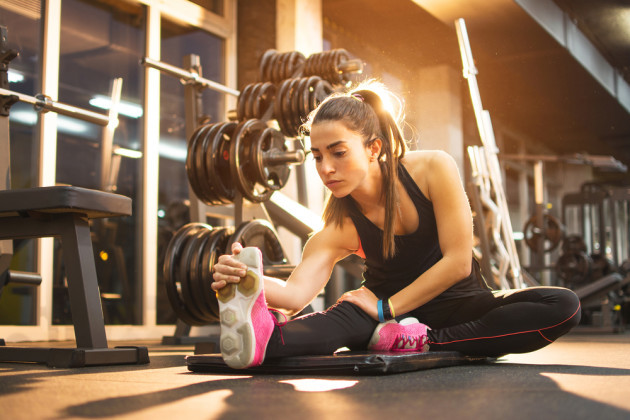‘Physical preparedness shouldn’t be a sometimes thing, it should be an all the time thing’
Andreo Spina
IF YOU READ last week’s article, you’ll know that one component of a healthy morning routine was to move, to take ten minutes each day to loosen out, get the blood flowing and allow yourself the time to connect your mind, body and breath in preparation for the day ahead.
For most of us, our lives are comprised of hours commuting, sitting at a desk, never ending emails, phone calls, messages and if we’re lucky, find enough time in the day to foster or maintain important personal relationships. Frankly, it’s exhausting.
We have busier lives than ever before, but it doesn’t mean we need to sacrifice our health in the process.
Humans were made to move, not just sit and stare at a screen all day. Early mornings are a critical period for the rest of your day and the benefits of starting it with just ten minutes of movement go beyond just physical health and wellness. “
‘Tech neck’, lethargy, decreased concentration and productivity, stiff and sore shoulders and hips are all byproducts of a sedentary lifestyle and not enough daily movement.
However, with a little free space, time, a yoga mat and your own body, you can begin to counteract the negative effects of modern life.
What is mobility?
Mobility refers to your active range of motion, how much movement you have around a joint in which you can control and exert force (as opposed to flexibility, which is passive and lacks the control element).
While most people think of mobility as a form of stretching, it’s predominantly training the nervous system to be able to achieve, control and strengthen a greater range of motion.
It provides a good return (physiological improvements) on investment (your precious time) and can go a long way to maintaining healthy hips, shoulders and spine.
Before delving into the actual routine, a few caveats:
The below is a general routine that targets the areas that most people struggle with.
When it comes to mobility, there should be a reasoning behind why you’re doing what you’re doing — ‘apply mobility where it is needed most, at the time of most need’.
So, if, for example, you already have plenty of range and no limitations in your shoulders, don’t perform excessive amounts of shoulder mobility drills. Instead, put your time and efforts into hips, thoracic spine etc.
If something hurts, stop.
Sounds sensible but sometimes it can difficult to differentiate between discomfort/cramping and actual physical pain.
Take time to learn the difference and apply common sense; you should never be working through intense pain with this routine, especially if rehabbing from an injury. If you are experiencing pain reduce the range of motion or regress to an easier movement.
And, in case I don’t say it enough. focus on deep breathing. Your breath has a big impact on the tension you hold in your body and will add an extra stimulus to the routine.
Hip roll x 20
- Think about segmenting through the spine, lifting and lowering one vertebrae at a time.
Cat/camel x 10
- Going from “cat” position, tuck your tailbone and round out through the spine, spreading shoulder blades apart and drawing your bellybutton in.
Side lying windmill x 5 each side
- Reach long through the arm and follow the hand with your eyes.
Inchworm with down dog/ Hindu push ups x 5
- Again, segmenting through the spine and inching out into down dog. The Hindu should be a smooth and consistent movement, if too difficult, hold down dog x 5 secs instead.
Spiderman x 6 each side
- Drive the hips forward into the stretch, rotate and look to the top hand.
Deep squat pro x 4
- Keep torso upright, knees driving out and elevate the heels if necessary.
So, if getting out of bed and moving first thing in the morning each day is a painful chore, get up ten minutes earlier and give the above a go a see what a difference just a short series of movements can make to the rest of your day.
Sarah Cremen is a personal trainer and physiotherapist based in David Lloyd Riverview in Dublin. For more health and fitness advice and tips, you can follow her on Facebook, Instagram or Twitter.
The42 is on Instagram! Tap the button below on your phone to follow us!

